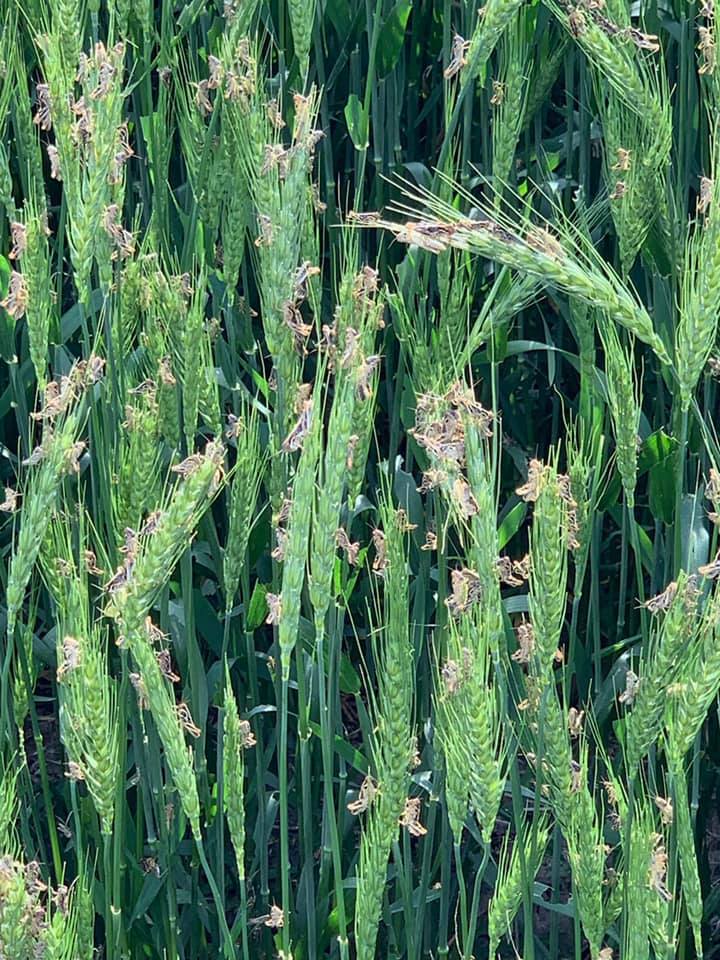Grasshopper populations remain high, particularly in the central region of Montana. Late in the summer season adults can fly and migrate into cropland from surrounding dry grassy areas. Grasshopper numbers will begin to decline but the insects will remain active, feeding, mating and laying eggs, until the first hard fall frost. Fall planted crops, such as winter wheat, can be particularly susceptible to damage.
Emerging winter wheat, especially when surrounded by dry grassland, can be vulnerable to damage by grasshoppers. The larger adult stage grasshoppers are more difficult to control and can migrate and infest fields quickly. Some points to consider this fall:
- Treatment thresholds (listed below) for emerging winter wheat are lower compared to spring wheat;
- Grasshopper numbers can be estimated using the square foot method: the number of grasshoppers in a one square foot area is estimated visually and randomly repeated 18 times while walking a transect. The total number of grasshoppers is divided by two to give the number per square yard;
- Alternatively, four 180-degree sweeps with a 15-inch diameter sweep net is considered equivalent to the number of grasshoppers per square yard;
- Border treatments applied as insecticidal sprays or seed treatments are the main recommendation for protecting emerging winter wheat;
- Typically, spraying 150 feet beyond the edge of the crop or 1-2 passes with treated seed around the perimeter of the field is a sufficient border;
- Adult grasshoppers are more difficult to control, the higher end of the label rate is recommended;
- Timing is important. Border sprays beyond the edge of the crop need to be applied just before the wheat emerges; if it is applied too early there may not be enough residual, it is applied too late, the damage may have already occurred;
- Systemic seed treatments eliminate the timing concern, but systemic insecticides require feeding to be active, however, damage should be slowed considerably;
- High populations and migration from surrounding grassy areas is particularly challenging. Continued monitoring of border areas and crop margins is important, additional treatments and multiple strategies may be necessary;
- Further information including insecticide options are listed on the High Plains IPM Guide, https://wiki.bugwood.org/HPIPM:Grasshoppers_SG.
Fall treatment guidelines for adult grasshoppers in winter wheat (High Plains IPM Guide).
| Adults/yd2 | |||
| Rating | Margin | Field | Treat? |
| Nonthreatening | <10 | <3 | No |
| Light | 10-20 | 3-7 | Yes |
| Threatening | 21-40 | 8-14 | Yes, consider wider border treatments |
| Severe | >41 | >15 | Yes, use wider border treatments and monitor for retreatment |
####
MSU Extension – 2022


